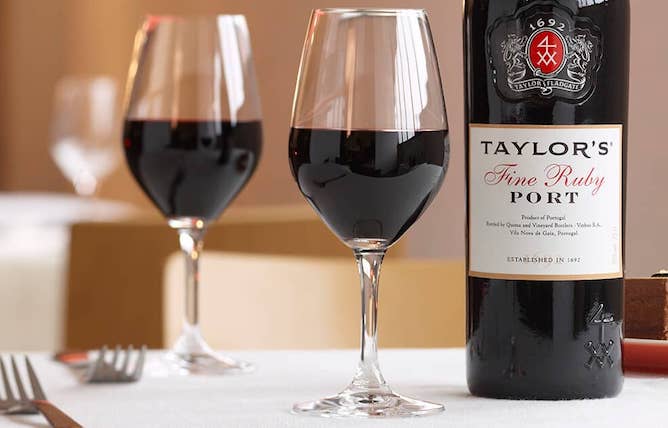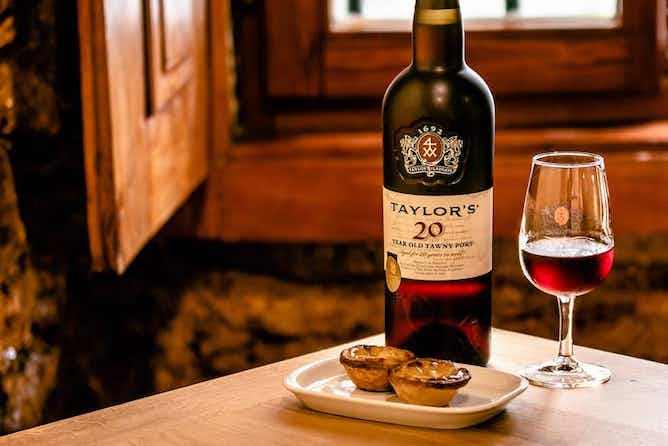When you visit Porto you’ll probably want to take a bottle of Port wine to impress your dearest ones back home. The problem is: how to choose among so many different varieties? What exactly will go along with your taste? And what about those designations: vintage, LBV, dates, years… what do they stand for?
The best way to answer your questions is to join my virtual Port wine tasting, an online event where I teach all the basics regarding this type of wine. As it is a very engaging and fun experience, it is perfect for groups of friends or team building activities. It also works well for couples (in case you want to surprise your better half… ;).
On this article I will cover the basics of Port wine, but if you really want to learn about these amazing Portuguese wines, then you should join a tour at a Port wine cellar. Another great option is to join me on one a wine tour in Douro Valley, where Port wine is produced.
Now, let’s talk about wine.
An introduction to Port wines
So, first things first: Port wine can be either Rosé, White, Ruby or Tawny, with different characteristics in terms of colours, aromas and flavors. Then, each one of those can then be classified as Young, Reserva or Superior, according to their age and quality.
Ruby Ports

Ruby Port wines are the most commonly found and they owe their dark color to the stage process, in concrete or stainless steel tanks, that prevent the oxidation process from happening. This way, they preserve much of their original color and have the characteristics of a young wine.
Superior Rubys can be either Vintage or LBV, which stands for Late Bottled Vintage. Vintage wines appear in exceptional years. They stay in massive oak barrels called balseiros and, due to their size, most part of the wine never is in contact with the wood. Once the stage process is over (it takes around 2 years), the wine is bottled without being filtered, creating a natural deposit and having the ability to age inside the bottle.
When the wine companies believe that they had an exceptional year and might, therefore, have a Vintage wine, they send it to be evaluated by Instituto dos Vinhos do Douro e Porto. So if you see a bottle of Ruby Port wine with the label “Vintage”, you’ll also find the year when it was produced.
LBV wines are considered inferior wines when compared to Vintage wines, but above regular Ruby Port wines. They have a stage process that lasts longer – usually 5/6 years-, and hence the name Late Bottled Vintage.
Vintage wines, due to their rarity and price, must be opened on a special occasion; its complexity should be discovered with time and care. Some suggest nuts, strong cheeses and dark chocolate to go along with it, but I personally prefer to drink it solo.
If you appreciate more impetuous Port wines, I would advise you to try Vintage Port wines or LBV’s (depending on your budget!).
Tawny Ports

Now, moving on to Tawny Port wines! Tawnys go through an ageing process inside smaller used wood barrels, which give them a particular amber tonality and special scents.
Used barrels mean that the wood already has flavours and smells that will be transmitted to the wine; smaller barrels mean that the wine is in closer contact with the wood and thus both the transmission process and oxidation process are accelerated. Tawnys are therefore complex wines and a constant surprised to your palate.
Superior Tawnys always have a reference to their “age”: 10, 20 or 40 years. This doesn’t mean that the wine is 10 years old, but that the wine has the characteristics of a wine with the mentioned age. Usually the older the better, so if possible try a Tawny Port wine above 20 years old.
And, due to their exotic and unique flavours, it is hard to advise you on what to eat along with Tawnys in general. The best you can do is to try the wine beforehand and then find the match that will work for you – usually with desserts with egg custard and / or almonds you cannot go wrong 😉
Save this article for later:

